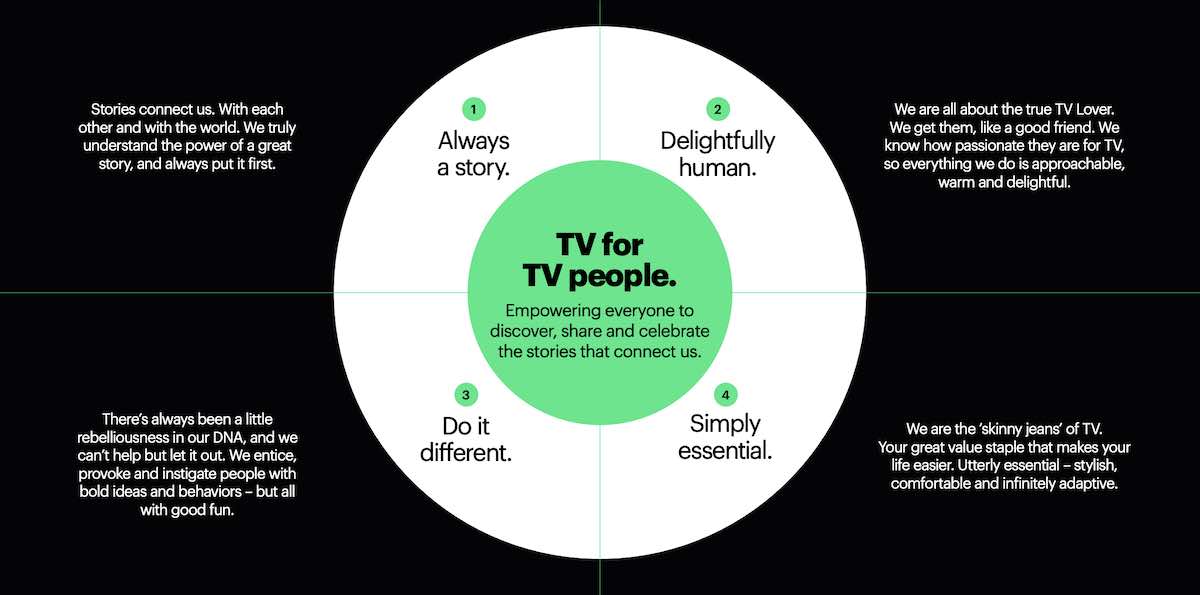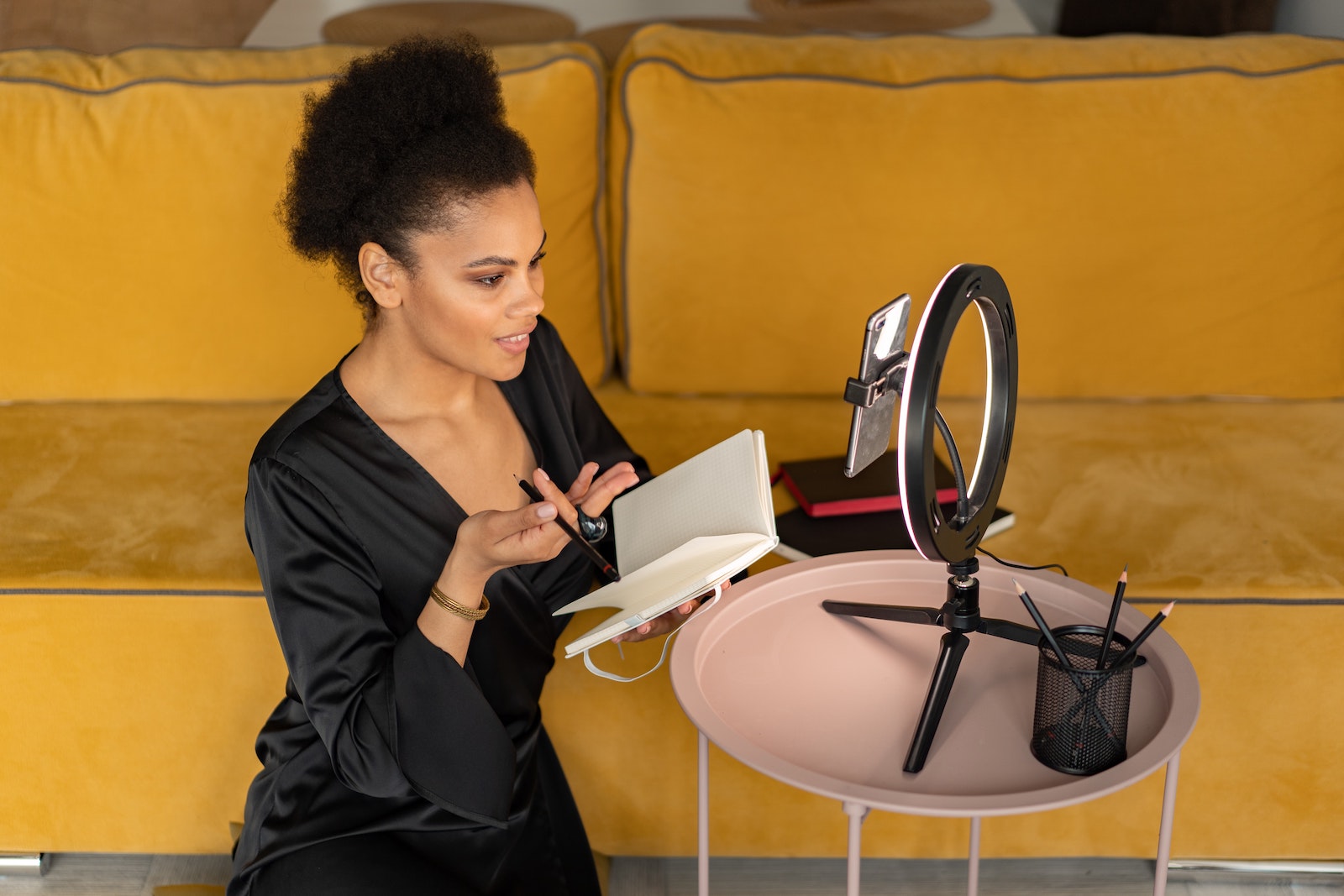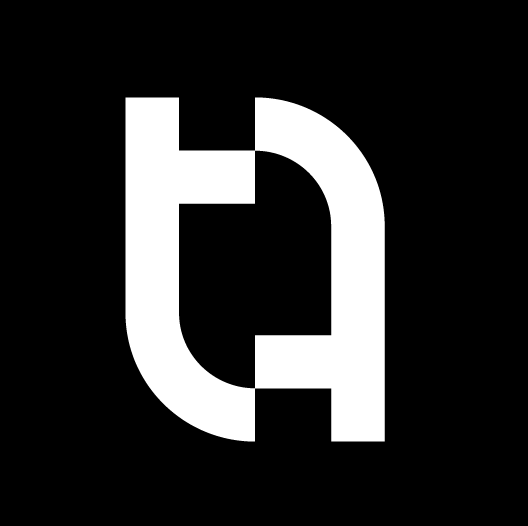Creating engaging content starts with an idea or vision. A creative brief template can help put those ideas onto paper and set the foundation for successful creative projects.
Creators commonly use creative briefs when:
- Partnering with brands or sponsors
- Collaborating with one or more teams in their company
- Working with other third parties like marketing or influencer agencies
Creative briefs outline every step of a project—goals, timeline, stakeholders, deliverables, and more. A well-written creative brief organizes projects, streamlines processes, and gets everyone on the same page.
To help you write effective creative briefs, we’ve put together this guide covering the most important elements. You can also download the creative brief template and apply it to your own business projects.
What is a creative brief?
A creative brief is a dynamic one or two-page document that outlines the scope and focus of a creative project. Creative briefs are useful when collaborators from different companies or departments are involved in a project. A copywriter, designer, marketer, or developer may review the brief to understand the project vision, expectations, and more.
For example, a marketing team that outsources copywriting and video production can use a creative brief. A self-employed creator who works with freelance writers can share a creative brief to outline the project.
The best creative briefs include details about every component of the project and help minimize confusion.

How to write a creative brief
Each creative brief varies depending on the project. That said, they share these basic components.
- Title
- Overview
- Company background
- Goals and objectives
- Audience
- Tone and voice
- Deliverables
- Budget
- Competitors
- Key messages
Title
The title of your project should be simple and descriptive. Don’t worry about crafting a catchy project title. Instead, focus on naming your project something that everyone will understand. For example, let’s say you want to promote a new product launch or online course with paid ads. You could title the project as the name or topic of your course and the type of campaign.
Project overview
The project overview introduces and summarizes your project. It concisely summarizes the project and gets collaborators and stakeholders excited. In a few sentences, it should cover:
- Main project details
- A summary of the project and goals
- Project benefits and value
- Measurable outcomes
When in doubt, keep it simple. The project overview should clearly and concisely state what you want to do, how you’ll do it, and why it is important.
Company background
When you’re working with external partners—freelancers, agencies, or other brands— include a company background section. This may include your brand’s mission, or how it generates revenue. You might also include company history details like years in operation, milestones or achievements, or noteworthy campaigns and products.
Many companies have a “boilerplate” that they include on most or all marketing materials that give the company’s history and background in one or two paragraphs. If you’re not sure what to include in the company background section, you can repurpose some of your boilerplate copy.
Goals and objectives
The goals or objectives section answers the basic but valuable question of why. Why is it a priority and why will it help your business?
There isn’t one correct answer to this question, but it’s still important to answer. The goals and objectives are a “north star” for your creative team. If everyone understands the purpose and measurable goals, they’ll have a more clear picture of what success looks like.
Your goals and objectives should always be specific, measurable, attainable, relevant, and time-bound. Good examples of goals are:
- Publish a landing page that ranks in the top 10 of Google search results for ‘online nutrition course’ within three months of publication.
- Generate at least 30 waiting list sign ups in 60 days for a new product management course by creating 12 TikTok live videos and Instagram ads. Test ad effectiveness by measuring clicks, leads, and conversions.
The goals are specific. They include deliverables and outline metrics for success. A bad example of a goal would be to get more people to sign up for your new online course.
When in doubt, get more specific. Can you add any numbers or dates to clarify what you want? The more you include, the more prepared your project collaborators will be.
Audience
Your audience for the creative brief is the group of people that you hope will consume your product or piece of content. If your creative message is an arrow and your creative brief is the bow, then the audience is the target you’re trying to hit.
One common mistake that many make with a creative brief is targeting an audience that is too broad. If you try to market your product or service to everybody, you could end up reaching no one. Instead, focus on the people that are most likely to convert. If you already have students or clients, look at them for guidance. What are their shared interests and characteristics? Do you have power clients—these can be big spenders or advocates for your brand.
Here are a few examples of target audience descriptions for a creative brief.
- Adults between the ages of 25 and 30 who live in San Francisco, earn at least $100,000 per year, and who never learned how to cook.
- Online creators and freelancers in their 20s and 30s who want to increase their rates and salary while working remotely.
Tone and voice
The audience portion of the creative brief template describes where, or toward whom, you are directing your message. The tone and voice describe how you speak to your audience.
The voice describes what the brand “sounds” like. Like in the real world, a voice usually reflects the person (or brand) who’s speaking. A voice can be stuffy and formal, relaxed and casual, high-energy and exciting, or slow and soothing.
A tone can be persuasive, offended, delighted, or lethargic—think of it as the “mood” or emotion behind the voice.
Using emotional language, or adjectives and descriptive words, to describe your voice and tone helps your project collaborators understand what the creative piece should sound like. Here’s an example of a good voice-and-tone description.
- Voice: Youthful, exuberant, high-energy
- Tone: Anticipatory—excited for an upcoming change
You should also use examples of messages that portray your tone and voice. For example, Hulu includes a “tone of voice” section in its brand guidelines.
One way that Hulu describes its tone of voice is “Delightfully Human”. To convey what that means, Hulu explains what that means and provides an example of copy that embodies it.
- Welcome to the family. Now sit back and get ready to be seriously entertained.

In your creative brief, include a few examples or link your brand book for more in-depth guidance.
Deliverables
Your deliverables are the specific items that you plan to create. A creative brief might have one deliverable, especially if it’s a large piece of content, such as an ebook, or several. For example, a blog post might require both written and visual deliverables.
For example, a landing page for a 30-day, interactive coding challenge might include the following deliverables.
- A checklist of challenges and a description for each
- An interactive, 30-day calendar that participants can share on social media
- A social media content calendar with graphics and videos for Instagram, TikTok, and Facebook
- An Unbounce landing page
Budget
How much money do you have available to spend on this project? The budget section of your creative brief should provide a need-to-know overview and a breakdown of different line items.
Outlining your budget from the start will help you avoid overspending and guide your decision.
Consider who needs to know what when you’re putting together the budget in your creative brief. A freelance writer or photographer will want to know how much you’re willing to pay them for their part of the project, but they don’t necessarily need (or want) any insight into the total project budget.
Alternatively, your accounting department might be most concerned about how much you’re spending. They may also require the granular line-item details from the creative brief.
Timeline
When do you need deliverables done so that you reach your goals? The timeline keeps everyone on track. It can also help break down large projects into more manageable milestones.
There are two ways that most project managers build timelines. One is to start from the current date and determine how long it will take to execute. Then create a timeline moving forward from today.
The other is to choose a date when you would like the project to be ready to launch. Then work backward from the launch date to figure out how long you can take for each step.
Each method of creating a timeline has its own benefits and drawbacks. The most important consideration to create a timeline is to make sure it is realistic. If you have a target launch date that is three months away, consider the workload and timeline for each collaborator.
Competitors
Some creative briefs don’t include any details about competitors. However, in marketing and advertising, it’s common to include a competitive landscape.
The competitor section should cover the company’s biggest market rivals and any relevant information about competitive campaigns and products. It should be fact-based and stick to only the information that the creative team needs.
Here’s an example of what a competitor section may include.
- The biggest competitor in this space is Meditate Intl. They recently launched a meditation program targeting young professionals and beginners. The campaign was energetic with bright colors and characters. Our messaging should focus on simplicity and relaxation. Designs should be clean and minimalist with calming colors.
Key messages
The key messages section outlines exactly what you want to say. Focus on one core message first.
If you include too many messages at once, you’ll likely confuse audiences and impede decision-making. By narrowing it down, you direct your audience’s focus to the most important information. It can also help reduce anxiety and influence your audience to take action. According to American psychologist and author of Paradox of Choice Barry Schwartz, giving audiences fewer choices or messages helps them make a decision.
If you have more than one key message, then consider if they are related or could stand on their own. If they aren’t, make a separate creative brief for them.
To help you craft your own, here are examples of key messages for various companies.
- Hiking and running shoe brand – Live more adventurously. Our waterproof, lightweight, trail running shoe is made for avid hikers that want to venture off the beaten path.
- Online cooking course – Create masterful dishes from the comfort of your own kitchen with cooking lessons from a Michelin-star chef.
- Startup entrepreneur coaching – Get one-on-one business advice and learn how to get your first 1,000 customers from the founder of two $100M companies.
Creative brief template
Ready to write your own creative brief? Here’s a creative brief template you can use to kick off your next project.
Project title and overview
Tip: Include the type of content that is being produced—video, blog post, online course—in the project name)
Company background
Who or what is asking for this piece of content or creative work? The company background should include details about how the company generates revenue.
(Company name) was founded in (year). We produce (product/service) for (target audience).
Goals and objectives
We are producing this (content type) to meet (general goals). Specifically, we want to generate (number) of (sales/visitors/impressions/follows) in (timeframe).
Audience
The target audience for this creative work is (age), has (education or career background), and makes (income level) per year. They consider themselves part of (lifestyle/group). Their likes are (activities or qualities), and their dislikes are (activities or qualities). They hope this product will help them (goal or aspiration).
Voice and tone
Our company voice is (adjective). The tone of this piece will be (emotion).
(Example of copy or creative that embodies your tone and voice.)
Deliverables
Project deliverables are:
- (Type of deliverable, including details about size, file type, brand guidelines)
Budget
Our budget for this project is (total amount). We expect this to include:
- (Description of each cost and the amount)
Timeline
The project launch date is on (DATE). Due dates for different deliverables are as follows:
- (Deliverable 1 – due date)
Competitors
Our biggest competitors in this space are:
- (Competitor 1 and a brief description of its core product, service, or feature)
To fully differentiate our product, please focus on (benefits) and use (tone).
Key messages
The key message we should convey:
- (key message)
Why is a creative brief necessary?
You might think a creative brief is unnecessary if your team is experienced, but nothing could be further from the truth. In fact, there are lots of important reasons to draw up a creative brief for every campaign or creative project.
For starters, creators may find clients and brand partners expect a comprehensive creative brief before they provide a down payment or sign off on a project. Plus, internally, your team may need a creative brief before they can begin working with any confidence. Creative briefs are also important because they:
- Ensure that the creative messages and elements are all on brand or unified in their direction.
- Give your creative team a vision or inspiration for the resulting product, which can help them focus their work.
- Act as a starting point for your team to brainstorm great ideas.
- Allow third-party contributors, like freelancers, a quick and easy way to understand the project, product, and brand.
- Reduce client-creative conflict by guaranteeing that both parties are on the same page.
- Align the client’s expectations and budget with the overall creative strategy or project requirements, preventing issues with finances later.
Types of creative briefs
Creative briefs are used across industries and are very common tools, particularly among successful creators/advertising firms. Here are just a couple of types of creative briefs you might need to draw up depending on your niche and client’s requirements:
- Marketing creative briefs: These are used to successfully bring advertising campaigns to the market.
- Product design creative briefs: These are used to give a marketing team information about a new product or feature launch or to help a team design and launch a new product from scratch.
- Advertising agency creative briefs: These describe brand guidelines and help advertising agencies put out marketing materials that adhere to a brand’s voice and goals.
That said, creative briefs can come in all types, sizes, and varieties. If you regularly complete projects for your clients or partners, whether with an online business on Teachable, a small family business, or in person, and whether you work alone or with a team, writing a creative brief will only provide you with benefits in the short and long terms.

Who normally makes creative briefs?
Generally, a creative brief is made by a project manager, account manager, or supervisor in traditional work environments. They’re the people who work closely with clients and designers to produce creative projects, like advertisements, marketing campaigns, etc.
However, any project lead—or in our case, creator—can make a creative brief, as can anyone on your team. Some teams may even have multiple members draw up briefs to compare against each other so the team can choose the brief that feels like the best roadmap to success.
In addition, a brief can be produced by multiple people working simultaneously. For example, you may need the following teams to put together an effective creative brief:
- Your creative team may be responsible for brainstorming the initial ideas and determining whether the vision or concept is possible.
- The marketing team can help gather valuable data to focus your efforts and devise a winning strategy.
- Your accounting team, who will use sheets and accounting tools to track and analyze budgets and finances properly.
Even if you’re a creator with a limited team (or no team at all), a brief can help narrow down the scope of the work and cause you to think strategically.

Creative brief examples
Do you need some inspiration for drawing up your own creative briefs? Here are just a couple of examples to show what you should try to emulate and the benefits that creative briefs can provide:
- A visual creative brief used by Quaker Oats. This brief looks a little unorthodox compared to other briefs, but it has a lot of fundamental facts and critical information that advertisers and marketers can use to improve sales (clearly marked as “the objective”).
- A creative brief used by PayPal. This one is a little text-heavy, but it has an interesting graphic at the bottom to outline how the project’s various elements combine for maximum results.
- A creative brief for Hush Puppies. This brief clearly states the goals, message, tone, and other key factors in a list style, so it’s very easy to scan and comprehend whether you are a hypothetical longtime team member or someone just coming onto the project.
Remember, the visuals for a creative brief can vary heavily. Your briefs don’t have to look exactly like these examples, but they are good places to start.

Finishing your creative brief
With this creative brief template and tips on how to write a creative brief, anyone can plan successful collaborative projects. You may even tweak or adapt it to suit different types of projects for your brand.
Starting your creative projects with a brief will help you align with everyone from employees to brand partners and other collaborators. With Teachable’s digital downloads feature, creators like you can build and monetize templates, online courses, coaching, and more on a single platform.
{{audience-component="/blog-shortcodes/blog-popup"}}
FAQs
What is the purpose of a creative brief?
The purpose of a creative brief is to provide inspiration and guidance to your creative team so they can produce the best project possible. It’s also intended to provide your client with a timeline and budget framework so they know what to expect.
What makes a good creative brief?
A good creative brief should be comprehensive, easy-to-read, and descriptive of your project’s goals, target audience, and hypothetical results. It should also be interpretable by third parties who may come into the project late.
What is in a creative brief?
A creative brief usually includes a breakdown of the brand, a description of the project and its goals, the steps by which the project will come to fruition, and budget estimates. The exact contents of a creative brief can vary from project to project.
Join more than 150,000 creators who use Teachable to make a real impact and earn a real income.



%201%20(1)%20(1).png)

.png)
.png)


